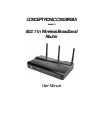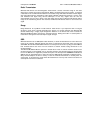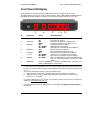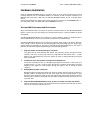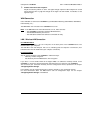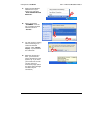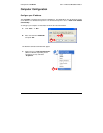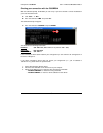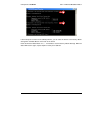
Conceptronic C300BRS4A 802.11n Wireless Broadband Router
6
Wireless LAN
A Wireless LAN is a cellular computer network that transmits data using radio signals instead of
cables. Wireless LAN technology is commonly used for home, small office and large corporate
networks. Wireless LAN devices have a high degree of mobility and flexibility that allow network to
be quickly set up or dismantled and allow them to roam freely throughout the network.
The IEEE 802.11n Wireless LAN standard is an improvement on the IEEE 802.11g standard. The
802.11n embedded Wireless LAN access point is fully compatible with legacy IEEE 802.11b and IEEE
802.11g devices.
Some basic understanding of wireless technology and terminology is useful when you are setting up
the Wireless Broadband Router or any wireless access point. If you are not familiar with wireless
networks please take a few minutes to learn the basics.
For home users who will not incorporate a RADIUS server in their network, the security for the
Conceptronic C300BRS4A, used in conjunction with other WPA-compatible 802.11 products, will still
be much stronger than ever before. Utilizing the Pre-Shared Key mode of WPA, the Wireless
Broadband Router will obtain a new security key every time it connects to the 802.11 network. You
only need to input your encryption information once in the configuration menu. No longer will you
have to manually input a new WEP key frequently to ensure security. With the Wireless Broadband
Router, you will automatically receive a new key every time you connect, vastly increasing the
safety of your communication.
The Wireless Broadband Router is an ideal solution for quickly creating and extending a wireless
local area network (WLAN) in offices or other workplaces, trade shows and special events. The
802.11n standard is backwards compatible with 802.11b and 802.11g devices.
The Wireless Broadband Router has the newest, strongest, most advanced security features
available today. When used with other 802.11n WPA (WiFi Protected Access) compatible products in
a network with a RADIUS server, the security features include:
WPA: WiFi Protected Access, which authorizes and identifies users, based on a secret key that
change automatically at regular intervals. WPA uses TKIP (Temporal Key Integrity Protocol) to
change the temporal key every 10,000 packets (a packet is a kind of message transmitted over a
network.) This insures much greater security than the standard WEP security. (By contrast, the
previous WEP encryption implementation required the keys to be changed manually.)



